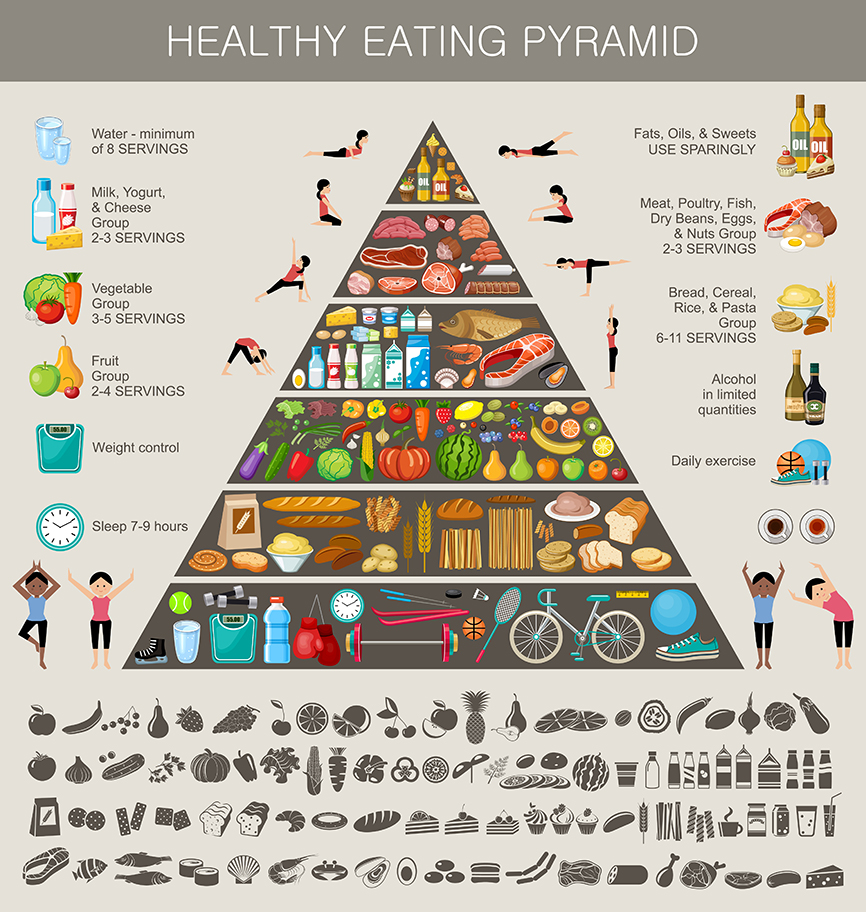Much has changed in the way we eat and what is considered a healthy diet over the past 74 years since the first publication of Canada’s Food Guide, then known as the Official Food Rules, which endeavored to prevent nutritional deficiencies during wartime food rationing.
The guide has seen many transformations over the years; in 1961 the name was changed to the Food Guide and later became Canada’s Food Guide to Healthy Eating in 1992. As of 2007, the guide is know as Eating Well With Canada’s Food Guide.
What has changed over the years? Most significantly is the recent change in the pyramid with fruits and vegetables replacing grains at the widest band or greatest number of servings recommended each day. The guide is also specific in the recommended daily intake for children, women of childbearing age and men and women over the age of 50. For example, the food guide recommends people over 50 take a Vitamin D supplement of 400 IU daily.
The modern food guide also addresses active living and reading labels to keep saturated and trans fats, sugar and sodium low. And in keeping with the times, there is a food guide mobile app that allow you to create a customized food guide based on age, sex and food preferences. To learn more about Canada’s Food Guide and to download the free app visit the Government of Canada website at: http://www.healthycanadians.gc.ca/eating-nutrition/healthy-eating-saine-alimentation/food-guide-aliment/my-guide-mon-guide/index-eng.php .
South of the border, the U.S. Department of Agriculture’s Human Nutrition Research Center on Aging has also created a new food guide, with adults over the age of 51 in mind. MyPlate for Older Adults, is a detailed tool for age appropriate shopping, recipes and advice on exercise. MyPlate also tackles specific age-related dietary concerns such as the need to consume adequate fluids because older adults sometimes don’t have the same sense of thirst as younger people and may become dehydrated more easily. Tea, coffee and even fruit with a high water content like watermelon, strawberries or cantaloupe can be included as fluids in this approach.
Seniors may need less fuel due to metabolic changes but nutritional requirements, such as protein, remain the same in old age or in some cases can increase. MyPlate has moved dairy into the protein slot of the guide because is a good source of protein for older adults who also require health fats. The guide also addresses the needs of seniors, who often live alone, by including foods that can be bought canned or frozen to allow for easy preparation and long shelf life.
To learn more about MyPlate follow the link: http://hnrca.tufts.edu/myplate/ .






Add Your Voice
0 Comments
Join the Discussion